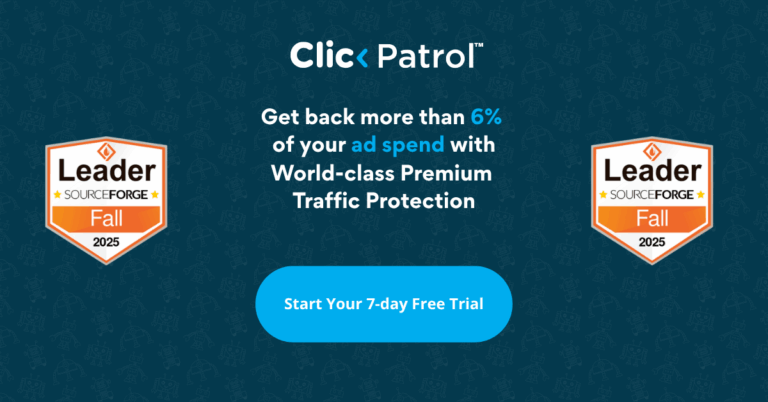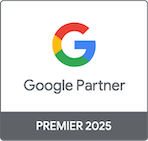Wasted ad impressions result from poor placements, such as MFAs, and from fraud. eMarketer estimates that 4% of U.S. ad spend reached MFAs in early 2024, and Forbes reports that $84 billion in ad spend was lost to fraud in 2023.
How to design a sustainable strategy to cut wasted ad impressions and boost ROI
Abisola Tanzako | Nov 11, 2025

Table of Contents
- Understanding wasted ad impressions: How bad placements damage campaign performance
- Step-by-step guide: Building a sustainable strategy to reduce wasted ad impressions
- Step 1: Audit your ad placements
- Step 2: Refine your targeting
- Step 3: Use exclusion technology
- Step 4: Monitor performance continuously
- Step 5: Optimize based on verified data
- Step 6: Prioritise sustainability and transparency
- How ClickPatrol eliminates wasted ad impressions in real-time
- The broader benefits of sustainable ad strategies: ROI, brand trust, and environmental impact
- Real-world examples of sustainable ad strategies with ClickPatrol
- Maximize ad impact: Why sustainable ad practices are key to 2025 success
Wasted ad impressions are a significant issue in digital advertising. With global ad spending projected to surpass $1.17 trillion in 2025, marketers risk losing a large share of their budgets to ads placed on low-quality or irrelevant websites that attract fraudulent traffic.
These impressions offer no real value and reduce campaign effectiveness. For brands committed to sustainability, ignoring this issue means supporting waste and inefficiency.
Adopting sustainable ad practices, those that maximize spend while protecting brand integrity, audience trust, and environmental health, is now essential.
This article explores how wasted ad impressions occur, their financial and environmental impacts, and practical strategies, powered by ClickPatrol’s exclusion technology to minimise waste and achieve sustainable ROI.
Understanding wasted ad impressions: How bad placements damage campaign performance
eMarketer reports that 4% of U.S. media ad spend landed on MFA sites in January to May 2024, down from 15% in late 2022 but still an enormous inefficiency.
Wasted ad impressions occur when ads appear in the wrong context, on low-quality websites, irrelevant pages, or alongside non-human (bot) traffic.
These bad placements mean your ads are seen by the wrong audience or not by real people at all, leading to poor engagement and inflated metrics.
Over time, this undermines campaign performance by lowering click-through rates, wasting budget, and distorting data that should guide marketing decisions.
In essence, every wasted impression reduces the accuracy of your targeting efforts and the overall effectiveness of your advertising strategy.
After understanding how wasted impressions occur, the next step is to design a sustainable strategy that eliminates them at the source.
Step-by-step guide: Building a sustainable strategy to reduce wasted ad impressions
Creating a plan to reduce wasted ad impressions must be purposeful. This is a roadmap with the wisdom of ClickPatrol.
Step 1: Audit your ad placements
Begin by reviewing where your ads appear. Identify low-quality or irrelevant websites, placements with high impressions but low engagement, and suspicious traffic. This audit helps reveal exactly where waste is happening.
Step 2: Refine your targeting
Narrow your audience to focus on verified, high-intent users. Use demographic, behavioural, and contextual filters to ensure your ads reach people genuinely interested in your offerings.
Avoid broad placements that inflate impressions without real engagement.
Step 3: Use exclusion technology
Implement tools like ClickPatrol’s exclusion lists to automatically block fraudulent sites, bot traffic, or poor-performing placements. This proactive filtering helps maintain ad visibility in safe, high-quality environments.
Step 4: Monitor performance continuously
Sustainability requires vigilance. Monitor key performance indicators, including the impression-to-conversion percentage and the waste percentage, per week. Apply attribution models (e.g., MTA) to connect placements to outcomes.
Step 5: Optimize based on verified data
Use accurate performance data, not vanity metrics, to refine future campaigns.
Regular optimization ensures your ad spend goes toward valuable impressions that actually drive results.
Step 6: Prioritise sustainability and transparency
Sustainable advertising is not just about reducing waste; it is about long-term brand integrity.
Choose partners and platforms that value transparency, ethical placements, and environmental responsibility.
How ClickPatrol eliminates wasted ad impressions in real-time
ClickPatrol uses real-time detection and exclusion technology to prevent ad waste before it happens.
The platform continuously scans ad placements, identifying fraudulent clicks, bot traffic, and irrelevant impressions the moment they occur.
Once detected, these low-quality sources are automatically excluded from your campaigns, ensuring that every ad impression reaches a genuine, relevant audience.
ClickPatrol’s exclusion lists and live analytics work together to keep campaigns clean, budgets efficient, and performance metrics accurate, helping brands achieve sustainable, results-driven advertising.
Results? Clients realize 25-50% waste reductions, according to internal benchmarks, which align with Forbes’s aggressive filtering demand.
The broader benefits of sustainable ad strategies: ROI, brand trust, and environmental impact
Sustainable ad strategies go beyond reducing wasted impressions; they create lasting value across financial, reputational, and environmental fronts.
By investing in verified, high-quality placements, brands see more substantial ROI as every impression counts toward genuine engagement and conversions.
Consistent visibility in credible spaces also strengthens brand trust, showing audiences that your business values transparency and integrity.
Beyond profit and perception, sustainable advertising reduces the carbon footprint of digital campaigns by cutting unnecessary data transfers and server loads.
In essence, adopting sustainable ad practices benefits not just your bottom line but also your reputation and the planet.
Real-world examples of sustainable ad strategies with ClickPatrol
Avis South Africa cut ad waste by using ClickPatrol’s AI exclusion engine. By blocking low-quality placements and invalid clicks, conversions rose 123%, CTR 91%, and CPA dropped 36% showing how precise placement control drives sustainable ROI.
In Europe, ClickPatrol filtered 8% fraudulent traffic from 18,311 clicks, saving 29% of ad spend (€209 from €1,830), proof that cleaner traffic means leaner, greener campaigns.
These results show that blocking bad placements is not just smart spending, it’s sustainable advertising.
Maximize ad impact: Why sustainable ad practices are key to 2025 success
In 2025, reducing wasted ad impressions is more than a cost-saving measure; it is a statement of responsibility.
By embracing sustainable ad strategies and leveraging ClickPatrol’s real-time exclusion technology, brands can protect their budgets, strengthen audience trust, and contribute to a cleaner digital ecosystem.
The future of advertising belongs to those who invest in efficiency and integrity. A sustainable approach to reducing wasted ad impressions is not an option but a necessity for success in the ad industry.
Auditing placements, refining targeting, and using tools such as ClickPatrol can fix ad targeting issues, increase ROI, and help create a more sustainable digital future.
Each saved impression strengthens your brand’s image and overall performance.
Frequently Asked Questions
-
What are the primary reasons behind wasted ad impressions?
-
How does ClickPatrol filter out bad placements?
ClickPatrol selects only reputable publishers by helping you scan and block irrelevant or fraudulent sites in real-time with advanced filters. This solves the issue of ad targeting.
-
Will sustainable ad strategies enhance ROI?
Yes, according to Statista, quality search ads have an ROAS of 11% per dollar. This can be increased by 20-30% through waste reduction, such as exclusions provided by ClickPatrol.
-
What is the global scale of ad fraud?
The estimates reach $72 billion in invalid traffic by 2024 and $172 billion by 2028.






